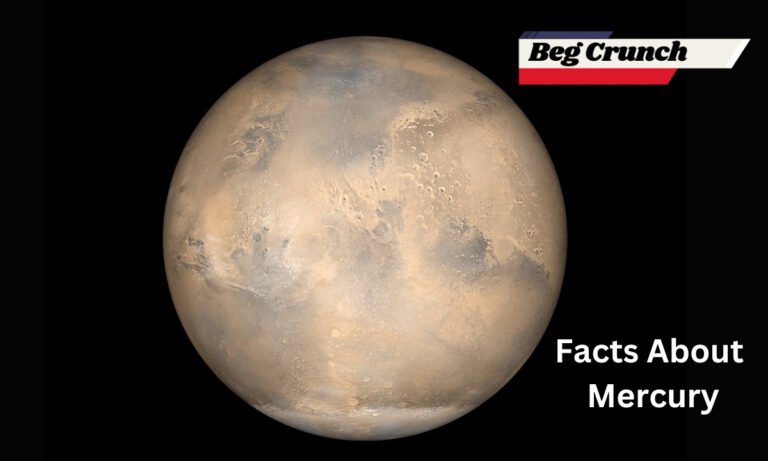Facts About Neptune
Neptune, often Introduction
Neptune is a gas giant, primarily composed of hydrogen and helium, similar to its neighboring planet, Uranus. It was discovered in 1846 by German astronomer Johann Gottfried Galle, and its name is derived from the Roman god of the sea. Despite being one of the more distant planets, Neptune has been the subject of numerous studies and explorations, revealing its enigmatic qualities.
Basic Facts About Neptune
- Orbital Period: Neptune has an orbital period of approximately 165 Earth years.
- Day Length: A day on Neptune lasts about 16 hours and 6 minutes.
- Atmosphere: The planet’s atmosphere consists of hydrogen, helium, and trace amounts of methane, which gives Neptune its distinct blue color.
- Weather: Neptune experiences some of the most powerful winds in the solar system, with wind speeds reaching up to 1,500 miles per hour (2,400 kilometers per hour).
- Temperature: Despite its distance from the Sun, Neptune is one of the coldest planets in the solar system, with temperatures dropping as low as -370 degrees Fahrenheit (-224 degrees Celsius).
The eighth and most distant planet in our solar system, often known as the “Blue Giant,” it is located the farthest from the Sun. With its captivating deep blue color and intriguing features, Neptune has captured the imagination of scientists and space enthusiasts alike. In this article, we will delve into some fascinating facts about Neptune, exploring its unique characteristics, composition, and mysteries.
Neptune’s Striking Blue Color: A Cosmic Symphony of Hues
Neptune’s captivating blue color is a cosmic siren that beckons our gaze, a hue that sets it apart in the realm of celestial bodies. This remarkable shade is an intricate dance of light and molecules within its atmosphere.
The secret to Neptune’s azure allure is hidden within its atmospheric gases, most notably methane. Methane, a molecular compound composed of carbon and hydrogen, becomes the elusive artist behind Neptune’s symphony of color.
As sunlight infiltrates Neptune’s atmosphere, it encounters this sea of methane molecules. Unlike an ordinary mirror, methane selectively absorbs light in the red spectrum while releasing the cooler embrace of blue-green wavelengths. This captivating dance of absorption and emission engenders Neptune’s characteristic blue hue—a hue that draws observers into the depths of its enigmatic visage.
Methane’s Chromatic Legacy: A Play of Absorption and Reflection
The coloration of Neptune’s atmosphere becomes a testament to the profound ways in which matter interacts with light. Methane’s absorbing prowess is harnessed within the warm embrace of Neptune’s atmospheric layers. It captures red light with an unmatched affinity, absorbing these warm hues to create a chromatic ballet that sets the stage for the planet’s characteristic blue reflection.
Through this interplay, Neptune encapsulates the very essence of cosmic artistry—an intricate weave of physics and chemistry that crafts an otherworldly canvas. This vibrant dance of light absorption and reflection is an embodiment of the dynamic forces at play within Neptune’s atmosphere, leaving a spectral signature that echoes through the fabric of space.
Distinctive Features of Neptune
- Great Dark Spot: Similar to Jupiter’s Great Red Spot, Neptune also boasts a Great Dark Spot. This massive storm system was first observed in 1989 by the Voyager 2 spacecraft.
- Triton: Neptune has a unique moon named Triton, which is notable for its retrograde orbit (opposite to the planet’s rotation) and geysers that spew nitrogen gas into space.
- Rapid Rotation: Despite its large size, Neptune rotates rapidly on its axis, resulting in a bulging appearance at its equator.
Composition and Structure
Neptune’s interior is composed of a solid core, surrounded by layers of water, ammonia, and methane ices. As we move outward, the pressures and temperatures increase, creating a layer of metallic hydrogen, which contributes to the planet’s magnetic field. This field is tilted and off-centered, likely due to the planet’s complex internal structure.
Moons of Neptune
Neptune has a diverse collection of moons, each with its unique characteristics. Triton, the largest moon, stands out with its intriguing features, including its icy surface and active geysers. Other moons like Nereid, Proteus, and Naiad have also provided valuable insights into the moon formation process and Neptune’s gravitational interactions.
Neptune’s Rings
Although not as prominent as Saturn’s dazzling rings, Neptune also has a set of rings, consisting primarily of dust, ice particles, and possibly even some rocky debris. These rings are relatively faint and challenging to observe from Earth, requiring close-up missions like Voyager 2 to provide detailed images and information.
Exploration and Discoveries
The Voyager 2 spacecraft, launched by NASA in 1977, provided invaluable information about Neptune during its flyby in 1989. This mission offered close-up views of the planet, its rings, and its moons. Since then, Neptune has been observed by powerful telescopes and the Hubble Space Telescope, contributing to our understanding of its atmospheric dynamics and unique characteristics.
FAQs
Q1: Is Neptune the coldest planet in the solar system?
Yes, Neptune is considered one of the coldest planets in the solar system, with temperatures plummeting to around -370 degrees Fahrenheit (-224 degrees Celsius).
Q2: Can we see Neptune without a telescope?
Yes, Neptune is visible from Earth, but it appears as a tiny blue dot even with telescopes due to its great distance from our planet.
Q3: Does Neptune have a solid surface?
Unlike Earth, Neptune lacks a flat surface. Its “surface” gradually transitions from its gaseous atmosphere to its icy, slushy mantle and core.
Q4: Are there any plans for future missions to Neptune?
As of now, there are no concrete plans for future missions to Neptune. The distance and challenges associated with reaching this distant planet make such missions complex and costly.
Q5: What is the significance of Neptune’s tilted magnetic field?
Neptune’s tilted and off-centered magnetic field suggests a complex internal structure and dynamic processes within the planet. Scientists study this field to better understand the planet’s composition and behavior.
Conclusion
Neptune continues to intrigue scientists and space enthusiasts with its captivating blue color, powerful storms, and unique features. As our understanding of this distant planet evolves through advancements in technology and exploration, Neptune’s mysteries are gradually being unveiled, offering us a glimpse into the complex dynamics of our solar system.







